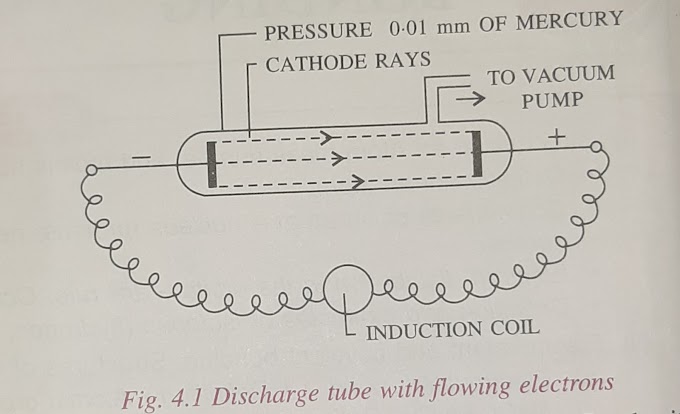Chapter 6: Electrolysis, ICSE Important Question, Important Notes and MCQS.
Chapter 6: Electrolysis
Metals are conductors and non-metals are non-conductors of electricity. Some compounds decompose when in aqueous state or in molten state and electricity is passed through them. They are called electrolytes.
Some compounds which do not conduct electricity either in aqueous or in molten state are called non-electrolytes.
Flow of electricity through a conductor is a physical process. Decomposition of an electrovalent compound due to passage of electricity in electrolysis is a chemical process.
Definition and examples:
Electrolysis is the process of decomposition of a chemical compound in aqueous or molten state by a chemical change due to passage of direct electric current.
Electrolytes are electrovalent compounds which allow electricity to pass through them in aqueous or molten state.
Electrolytes:
There are two types of electrolytes: Strong and weak electrolytes
Strong electrolytes (E.g. NaOH) disassociate completely and are good conductors of electricity whereas weak electrolytes (E.g. NH4OH) disassociate partially and are poor conductors of electricity.
Non-electrolytes are compounds which do not allow electricity to pass through them in molten or in aqueous state. They contain only molecules. (E.g. Alcohol, Benzene)
An electrolytic cell is a non-conducting vessel having two immersed electrodes into a solution of electrolytes to bring about electrolysis. It requires an external DC power source.
Electrochemical cells are devices which are used to convert chemical energy to electrical energy like simple voltaic cell.
Electrodes are two rods or plates of conducting metals of graphite through which electricity is passed to the electrodes.
The electrode connected to the positive terminal of the battery is called anode and the electrode connected to the negative terminal of the battery is called cathode.
Ions going to the anode are called anions and the ions going to the cathode are called cations.
Ions are atoms or groups of atoms either carrying a positive of negative charge.
Oxidation: Removal of electrons
Reduction: Addition of electrons
Mainly, non-metals are oxidising agents and metals are reducing agents.
According to Arrhenius theory, water helps to make electrolytes into ions. According to modern theory, electrolytes are already ionic and water helps to break the electrostatic forces of attraction between them.
The process of electrolysis is a redox reaction.
The process in which an ionic compound dissociates into ions in the fused state or in aqueous solution is called electrolytic dissociation.
The process in which polar covalent compounds are converted into ions, in water solution, is called ionisation.
Electrochemical series:
The metals are arranged in an electrochemical series based on their increasing tendency to lose electrons and is called the electrochemical series of metals.
The anions are arranged in an order based on their tendency to lose electrons at the anode. This arrangement is called electrochemical series of anions.
Selective discharge of ions at electrodes:
- Position of the ion in the electrochemical series: The ion which is below the one of the competing ions discharge at the electrodes.
- Concentration of ions: When two ions of the same nature compete, the type of ion which is more concentrated than the other gets discharged and it does not follow the electrochemical series.
- Nature of electrodes: Active electrodes like Cu, Ni, Ag, etc. can take part in the electrolysis reaction.
Inert electrode platinum is affected by bromine. So, platinum electrode should not be used when the product formed will be bromine.
In the electrolysis of acidified water, the ratio of hydrogen to oxygen released is 2:1.
- Electroplating: Electroplating is a process in which a thin film of a metal like gold, nicker, chromium, etc. gets deposited on another metallic article with the help of electricity. It is done for decoration and to protect metals from corrosion or rusting.
For electroplating an article with silver, sodium argentocyanide Na[Ag(CN)2] or potassium argentocyanide K[Ag(CN)2] is used as the electrolyte. During the process of electroplating an object with a spoon, the silver atoms in the anode dissolve as ions and migrate and get deposited on the cathode. The thickness of coating on the spoon depends upon the duration.
If compounds like silver nitrate are used as an electrolyte, the process will be fast which leads to uneven deposition of silver on the spoon.
If an iron article is to be electroplated with nickel, the electrolyte used is NiSO4 (Nickel sulphate).
The article which is to be electroplated is always fixed as the cathode since is the electrode where metals are attracted to.
Electro refining is done to metals like zinc, lead, mercury, silver and copper. The insoluble impurities settle down at the bottom of the anode and is called anode mud.
Metals which are above in the electrochemical series are extracted by the process of electrometallurgy. They are not separated in aqueous solution as hydrogen will get discharged at the cathode. They are taken in fused state and electricity is passed through them. This way the metals are obtained at the cathode which is mainly made of iron. The anode is mainly made of graphite.






0 Comments
Hope Everyone Reading my posts are gaining KNOWLEDGE and able to know something new and informative.
📚📖📕🧾📝😅
Sharing is Caring. So please share this website with everyone you know so that they can also improve their KNOWLEDGE !!!